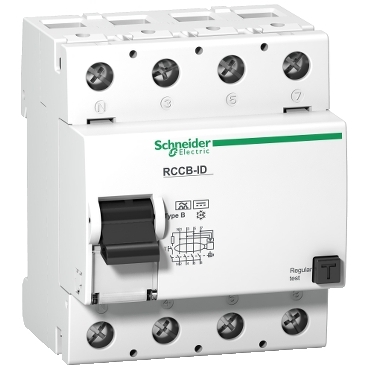There are different criteria in the selection of circuit breakers including voltage, frequency, interrupting capacity, continuous current rating, and unusual operating conditions. This article will give a step by step overview on selecting an appropriate circuit breaker for your specific application.
Voltage Rating
The overall voltage rating is calculated by the highest voltage that can be applied across all end ports, the distribution type and how the circuit breaker is directly integrated into the system. It is important to select a circuit breaker with enough voltage capacity to meet the end application.
Frequency
Circuit breakers up to 600 amps can be applied to frequencies of 50-120 Hz. Circuit breaker application on frequencies higher than 120 Hz will require derating. On higher frequencies, the eddy currents and iron losses causes greater heating within the thermal trip components thus requiring the breaker to be derated. The derating factor depends on the ampere rating, frame size and frequency. A general rule, the higher the ampere rating, the greater the derating factor. Solid state trip breakers are pre-calibrated for 50 Hz or 60 Hz applications.
Maximum Interrupting Capacity
The interrupting rating is the highest amount of fault current the circuit breaker can interrupt without causing system failure to itself. The maximum amount of fault current supplied by a system can be calculated. One rule that must be followed when selecting the correct circuit breaker is that the interrupting capacity of the breaker must be equal or greater than the amount of fault current at the point in the system where the breaker is applied. Failure to apply the correct interrupting capacity will result to breaker damage.
Continuous Current Rating
Continuous current rating is at a specific ambient temperature. This ampere rating is the continuous current the breaker will carry in the ambient temperature where it was calibrated. A general rule of thumb for circuit breaker manufactures is to calibrate their standard breakers at 40°C. Ampere rating for any application depends solely on the type of load and duty cycle. Lighting and power circuits usually require a circuit breaker rated in accordance with the conductor current carrying capacity.
Typical Operating Conditions
When selecting a circuit breaker it is crucial to have in mind the end user location. Each breaker is different and some are better suited for more unforgiving environments. Below are a few scenarios to consider when determining what circuit breaker to use. Take note that the enclosure or panel protects components contained inside it (i.e. circuit breaker).
- High Ambient Temperature
- If standard thermal magnetic breakers are applied in temperatures exceeding 40°C, the breaker must be derated or recalibrated to the environment. For many years, all breakers were calibrated for 77° F which meant that all breakers above this temperature had to be derated. Realistically, most enclosures were around 104° F; a common special breaker was used for these types of situations. In the mid-1960s industry standards were changed to make all standard breakers be calibrated with 104° F temperature in mind.
- Corrosion and Moisture
- In environments where moisture is constant a special moisture treatment is recommended for breakers. This treatment helps resist mold and/or fungus that can corrode the unit. In atmospheres where high humidity is prevalent the best solution is the usage of space heaters in the enclosure. If possible, breakers should be removed from corrosive areas. If this is not practical, specifically manufactured breakers that are resistant to corrosion are available.
- High Shock Probability
- If a circuit breaker is going to be installed in an area where there is a high probability of mechanical shock a special anti-shock device should be installed. Anti-shock devices consist of an inertia counterweight over the center pole that holds the trip bar latched under normal shock conditions. This weight should be installed so that it does not prevent thermal or magnetic trip units from functioning on overload or short circuit scenarios. The United States Navy is the largest end user of high shock resistant breakers which are required on all combat vessels.
- Altitude
- Circuit breakers installed at an altitude over 1,800 m, circuit breakers must be derated for current carrying capacity, voltage and interrupting capacity. At high altitudes, the thinner air does not conduct heat away from the current carrying components as well as denser air found in lower altitudes.
Reference:
Matulic, Darko. 'Circuit Breakers' p. 171-173 On-Site Power Generation 4th Edition. Boca Raton, Florida: Electrical Generating Systems Association, 2006.
